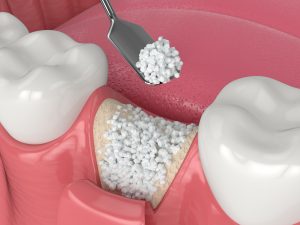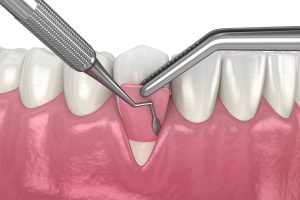Bone and Gingival grafting
What is bone grafting?
Bone loss may occur as a result of trauma, tooth extractions, long-term tooth loss, cysts, tumors or even gum disease. Today, we have the ability to grow bone where needed. Through bone grafting techniques, not only do we have the opportunity to place dental implants of proper length and width, but we can restore functionality of the jaw and aesthetic appearance.
A bone graft is a surgical procedure that replaces missing bone with material from the patient’s own body (autogenous) or with an artificial, synthetic or natural substitute (allograft). The graft not only replaces the bone, but can actually help your body to re-grow bone that has been lost.
What type of bone is used?
Bone is either obtained from a tissue bank or your own bone. Sinus bone grafts are also performed to replace bone in the posterior upper jaw. In addition, special membranes may be utilized that dissolve under the gum and protect the bone graft and encourage bone regeneration.
Major bone grafting is typically performed to repair defects of the jaws. These defects may arise as a result of traumatic injuries, tumor surgery, or congenital defects. Large defects are repaired using the patient’s own bone. This bone is harvested from a number of different sites depending on the size of the defect. The skull (cranium), hip (iliac crest), and lateral knee (tibia), are common donor sites. These procedures are routinely performed in an operating room and require a hospital stay.
Minor bone grafts are usually performed in order to repair more localized defects, for example, a tooth extraction, an area of atrophied bone, a site where the tooth has never come out, a post-trauma surgical site. These minor bone grafts are done at the clinic under local anesthesia or sedation. The bone comes from the patient, or natural (allogeneic) and certain techniques can be used to maximize bone regeneration (see NewPRGF section).
What is a gingival graft?
The gum(gingival) tissue that covers and protects the teeth and bone can sometimes become thin or even disappear, leaving the tooth bare. This can lead to sensitivity of the affected tooth. To slow down this gingival loss and reduce the associated sensitivity, a gum(gingival) graft is necessary. To do this, a small piece of gingiva from the patient’s palate is used to cover the area that has become bare or tender.

Monday to Friday, 8am to 5pm.
Closed Saturday and Sunday.